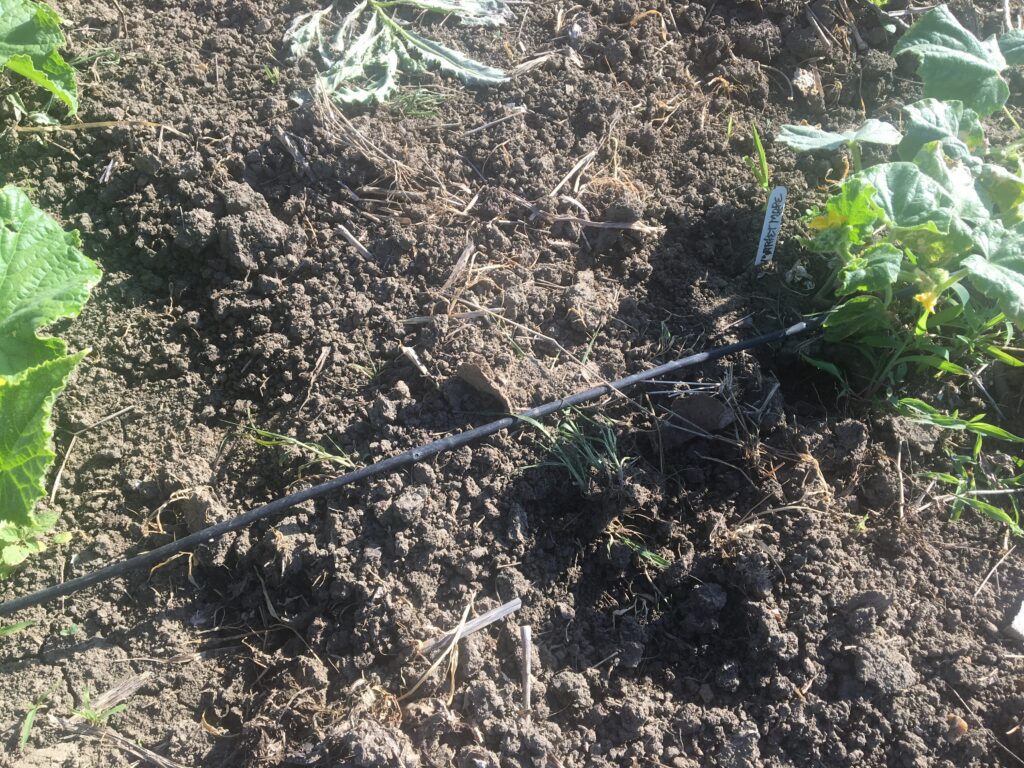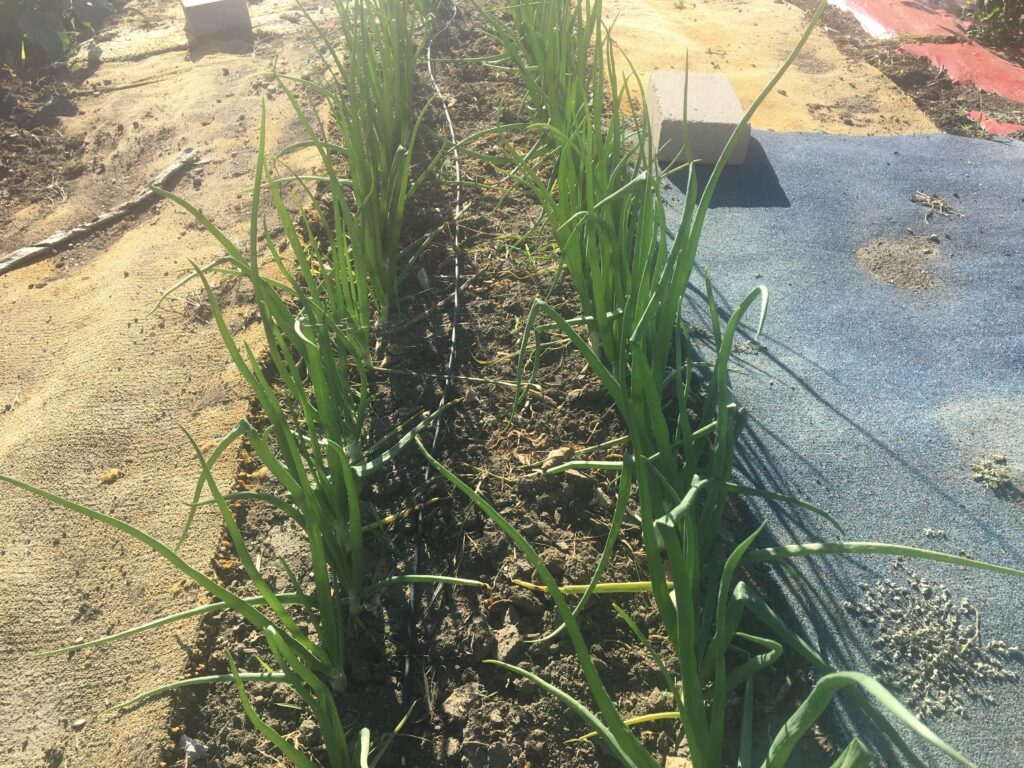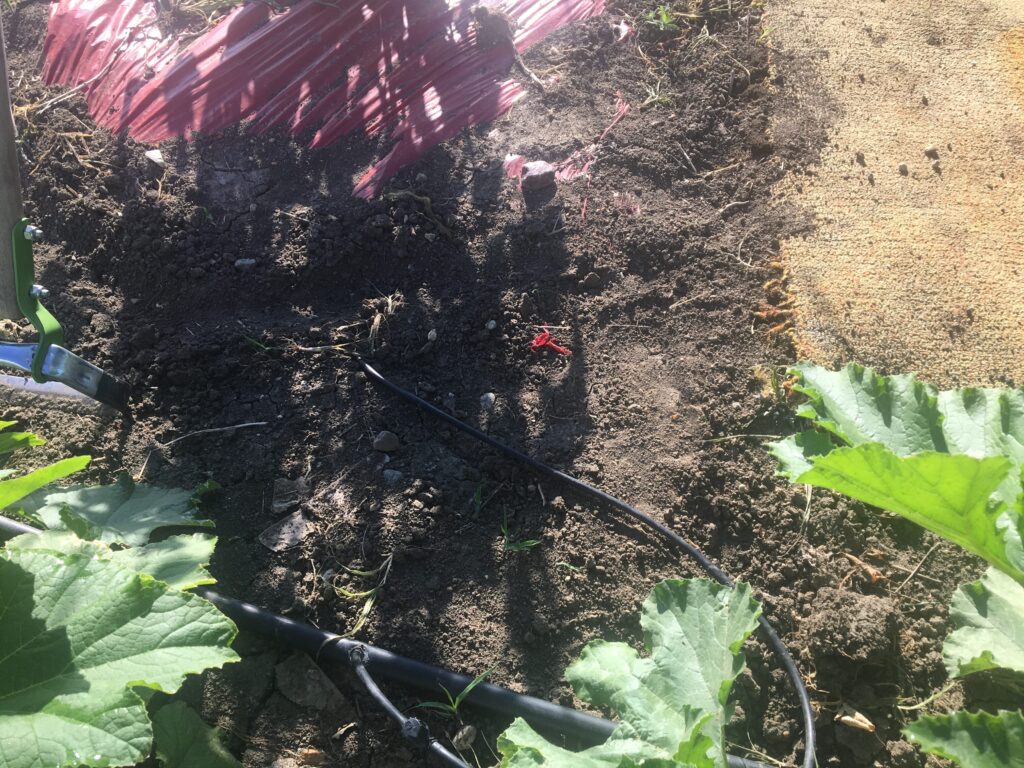A drip irrigation system allows water to be dispersed along the base and roots of the plants instead of using overhead sprinklers. My mother used a drip system which was digging trenches with a hoe along the plants with bisecting channels to other areas of the garden. My job was damming the channel and allowing water to go to another channel.

Why use drip irrigation to begin with?
- Conserve water without losing any to wind and evaporation. Since the water comes out slowly, the water goes into the soil easier with running off. Saves on the money.
- It keeps the leaves of the plants dry, meaning there will be fewer fungus diseases like Septoria in tomatoes. Also does not wash off the insecticide or fungicide you may have spray allowing for fewer applications.
- Saves time. I turn mine on in the morning and turn it off early in the evening.
- It is easy to install and leave in place all summer and fall. I drain the hoses in late fall, roll them up, and put back the following spring.
- You can get a cheap fertilizer injector making fertilizer application very easy.
Most common systems are a ½ inch delivery hose where you can insert ¼ inch drip lines (with pre-punched holes spaced 12 inches). Always get the little water pressure reducer for the system. Then you do not have to guess if your pressure is too high or low.

Soaker hoses are a form of drip irrigation, however, if you have a large area, they can get expensive.


